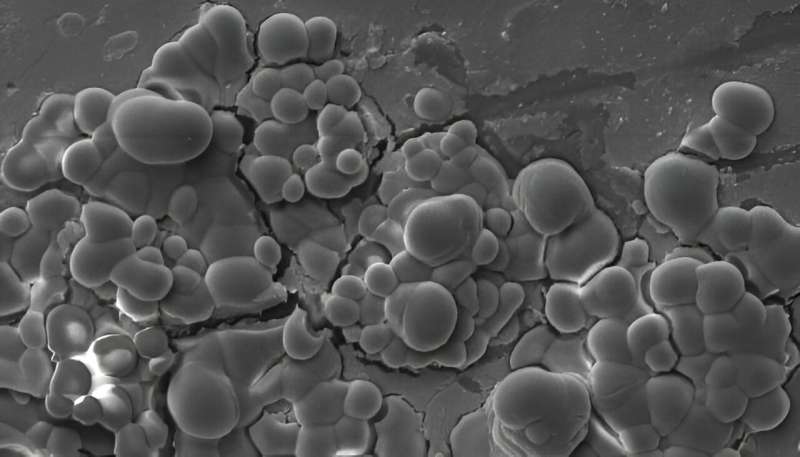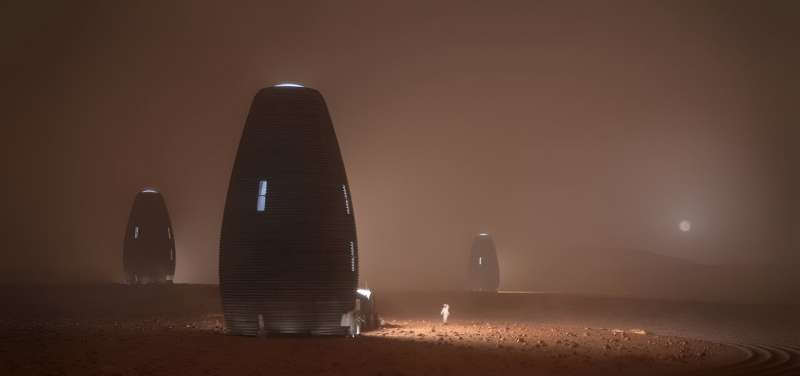In a recent study, a team of aerospace engineers tested a new electrostatic system for removing Martian regolith from spacesuits that could potentially remove harmful dust with up to 98% efficiency.
The new system was designed by Benjamin M. Griggs and Lucinda Berthoud, a Master's engineering student and Professor of Space Systems Engineering (respectively) with the Department of Aerospace Engineering at the University of Bristol, U.K. The paper that describes the system and the verification process was recently published in the journal Acta Astronautica. As they explain, the Electrostatic Removal System (ERS) they propose utilizes the phenomenon of dielectrophoresis (DEP) to remove Martian dust from spacesuit fabrics.
Much like its lunar counterpart, Martian regolith is expected to be electrostatically charged due to exposure to cosmic radiation. But on Mars, there's also the contribution made by dust devils and storms, which have been known to generate electrostatic discharges (aka lightning). During the Apollo missions, astronauts reported how the lunar regolith would adhere to their suits and get tracked back into their Lunar Modules. Once inside, it would similarly stick to everything and get into their eyes and lungs, causing irritation and respiratory problems.
Given their plans to return astronauts to the moon through the Artemis Program, NASA is investigating several methods to prevent regolith from getting into habitation modules—like coating technology for spacesuits and electron beams for cleaning them. While Martian dust is expected to inflict similar wear on spacesuits, the situation is made worse because it may contain toxic particles. As Griggs explained to Universe Today via email:
"Beyond having an abrasive effect on spacesuits themselves, Martian regolith is also expected to present health issues to astronauts. It is known to contain a range of harmful particles which may be carcinogenic or cause respiratory issues, and data from the Pathfinder mission showed the presence of toxic particles such as chromium. Martian regolith will therefore require removal from spacesuits prior to entry into habitation zones on Mars to prevent contact between astronauts and regolith particles."
The principle behind the device, dielectrophoresis (DEP), refers to the movement of neutral particles when subjected to a nonuniform electric field. Their proposed Electrostatic Removal System (ERS) comprises two components: a High Voltage Waveform Generator (HVWG) used to produce square waves of varying frequencies and amplitudes up to 1000 volts and an Electrostatic Removal Device (ERD) consisting of an array of parallel copper electrodes. When the square waves are applied across the electrodes in the ERD, a large and varying electric field is generated. As Griggs summarized:

"Therefore, when dust particles are incident on the surface of the ERD, the dust particles are displaced through a combination of electrostatic and dielectrophoretic forces (due to the large electric field), which acts on charged and uncharged particles respectively within the dust. This acts to displace dust particles in a direction perpendicular to the electrodes, resulting in the clearing of the ERD surface."
To evaluate the performance of their proposed system, Griggs and Prof. Berthoud developed an experiment to investigate several key variables. This included the frequency and amplitude of square waves, the spacing between the electrodes, the incline of the surface of the ERD, the distance between the electrodes and the dust layer, and the material of the surface from which dust is removed. The first step was to produce analytical models, which was an extremely complex task for this system, and previous numerical models were not particularly useful.
"For this work, a simpler model was therefore derived using Couloumb's law and the law of dielectrophoresis for a preliminary prediction of the effect of parameters including the square wave amplitude, electrode spacing, and dust-electrode separation (the actual distance between the electrodes and the dust particles they are acting to remove) on system performance," said Griggs. The next step was to prepare an experiment that would quantify the optimum performance and behavior of the proposed system and measure its effects. As Griggs described:
"Two metrics were developed for quantifying and comparing the system performance during testing: clearing performance (% of the surface that was clear did not contain dust particles), and clearing rate (a normalized rate of clearing based on the time taken to go from 5% to 60% of final clearing performance). A wide range of parameters were experimentally explored, including the frequency and amplitude of square wave applied across the electrodes. The system was then applied to removing dust from the outer layer of spacesuits by integrating a layer of Ortho-fabric (the outer layer of spacesuits) between the system and a layer of dust particles."
From their tests, they found that the system achieved an optimum clearing performance of 98% when integrated directly below a layer of dust particles. However, this dropped off significantly when the outer layer was introduced due to the increased distance between the system and dust particles. As a result, they conclude that this system would likely need to be integrated directly into the outer layer of spacesuits to increase performance, possibly woven into the fabric itself. The system offers a non-abrasive method for dust removal, which is essential to future Mars missions.
However, as Griggs summarized, further refinements are required before the technology can be used on future missions. In addition, the potential benefits reach beyond astronaut health and removing dust from spacesuits:
"This concept has already been explored with success, though by its very nature it compromises the integrity of the outer layer of spacesuit. The technology therefore requires refinement before application on future Mars missions. The technology provides a suitable alternative to the mechanical methods of dust removal used on the short-length Apollo missions (brushing and vacuuming), which are unsuitable for longer Martian missions due to their abrasive effect on the spacesuits. It is therefore also a very promising technology for dust removal in other applications such as dust removal from solar panels or optical devices, which will be essential in future Mars missions."
More information: Benjamin M. Griggs et al, Development of electrostatic removal system for application in dust removal from Martian spacesuits, Acta Astronautica (2024). DOI: 10.1016/j.actaastro.2024.02.016
Journal information:Acta Astronautica
Provided by Universe Today



